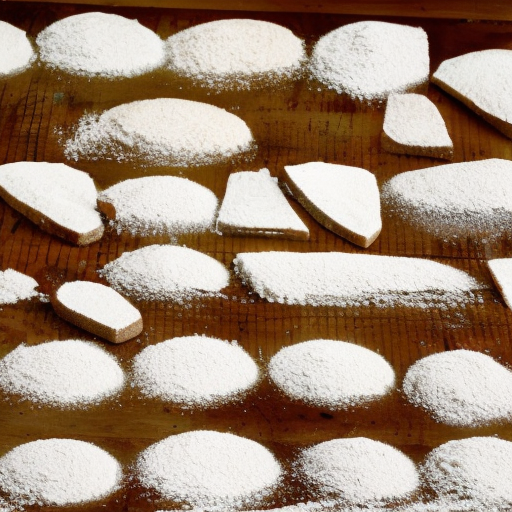Bleached vs unbleached flour: Both bleached and unbleached flour are made from wheat flour that has been stripped of its bran and germ. Both types of flour are widely available and cost about the same. For most purposes, regular, unbleached flour is the best choice. Reach for bleached flour when making delicate cakes, piecrusts or biscuits.
So What is the Difference between bleached and unbleached flour?
1. Appearance
The most obvious difference between bleached and unbleached flour lies in their appearance. Compare the two side by side, and you’ll notice that bleached flour is bright white, while unbleached flour has a softer, more natural appearance. You won’t notice the difference in most baked goods, although white cakes and angel food cakes appear brighter when made with bleached flour.
Taste
Bleached flour has a slightly bitter aftertaste that may be detectable in delicate cakes with subtle flavors. You probably won’t notice the taste in bread or cookies, although some people are extra sensitive to it. From a nutrition standpoint, unbleached flour is a better choice, because it’s free of the whitening agents used in bleached flour.
How they are made
After all purpose flour is milled, it naturally oxidizes over several weeks to an off white color. Bleached flour undergoes an additional whitening step. Millers use chlorine gas, chlorine dioxide or benzoyl peroxide to bleach flour. Some millers use potassium bromate as a whitening agent. This chemical has been banned in many countries as a carcinogen, although it is legal in the United States. This is made with the whole grain but uses a whitewheat grain instead of the more typically used red wheat. The white grain does not contain the pigment found in red wheat, which not only gives red wheat its color but also gives it a stronger flavor. Consequently, white whole wheat flour tends to have a milder taste, as well as a lighter color
How they perform
Bleached flour has less protein than unbleached flour, so baked goods made with it are tenderer. Bleached flour also absorbs moisture more quickly. Although you probably won’t notice the difference in a batch of cookies or muffins, you will notice it in a light, tender cake. This is why cake flour is usually bleached.
Price
Prices between the two is also seen to significantly vary. Unbleached flour takes longer to produce than the bleached flour hence it’s more expensive. This can thus affect the number of people who may wish to have unbleached flour on their tables due to budgetary issues.
Texture
Having a denser texture, unbleached flour provides more structure in baked goods, which makes it an ideal base for things like yeast bread, cream puffs, eclairs, and pastries. Foods made with bleached flour tend to have a softer texture.
Their use
Bleached (flour) is best for pie crusts, cookies, quick bread, pancakes, and waffles. Use unbleached flour for yeast bread, Danish pastry, puff pastry, strudel, Yorkshire pudding, éclairs, cream puffs, and popovers. In other words, the types of foods that require the ‘rise’ made possible by the protein (gluten) in flour are best made with unbleached flour.
The time they take at the aging process
Unbleached flour takes a longer time than the bleached flour at the aging process. Well, as you may suspect, bleached flour is just what it says all purpose (or plain) flour that has been treated with chemical agents to whiten its appearance by speeding up the naturalbleaching process. In addition, the bleaching process speeds up the natural aging and softening of the flour grains, meaning that they are ready for sale to the consumer far earlier than they would be if allowed to age naturally.

